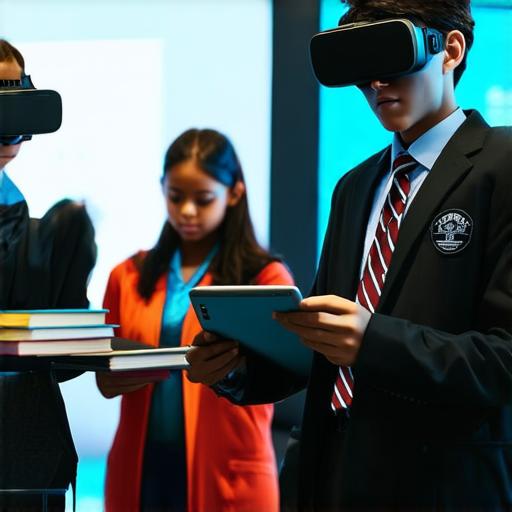<p>Virtual reality (VR) technology is rapidly advancing and becoming more accessible to educators and students alike. VR can provide an immersive and interactive learning experience that has the potential to revolutionize education.</p>Introduction: What is virtual reality?
Virtual reality is a computer-generated simulation that allows users to experience a three-dimensional environment as if they were physically present. VR headsets, sensors, and controllers track the user’s movements and translate them into an immersive digital experience. VR can be used in various fields such as gaming, entertainment, healthcare, and education.
Benefits of virtual reality in education
1. Enhances engagement
Virtual reality can provide an immersive and interactive learning experience that is more engaging than traditional teaching methods. Students are more likely to be interested and motivated to learn when they are actively engaged in the learning process.
2. Improves retention
Studies have shown that VR can improve memory retention by creating a more engaging and memorable learning experience. When students are immersed in a virtual environment, they are more likely to remember what they learned because they were actively engaged in the learning process.
3. Enhances understanding
Virtual reality can provide an immersive and realistic environment that allows students to gain a deeper understanding of complex concepts. By experiencing these concepts in a virtual world, students can see how they work in real-world scenarios and gain a better appreciation for their significance.
4. Promotes collaboration
Virtual reality can provide a collaborative learning environment that allows students to work together with others in real-time. This can help students develop teamwork skills, communication skills, and problem-solving skills, which are all important for success in the 21st century.
5. Increases creativity
Virtual reality can provide an environment that encourages creativity and exploration. By immersing students in a virtual world, they are free to explore and experiment without fear of consequences. This can help students develop their creative thinking skills and encourage them to take risks and think outside the box.
Case studies: Virtual reality in action
1. Anatomy lessons
Virtual reality can be used to provide an immersive and interactive learning experience in the field of anatomy. By experiencing the human body in a virtual environment, students can gain a deeper understanding of how it works and how different parts interact with each other. This can help students develop their critical thinking skills and improve their academic performance in science and medicine.
2. History lessons
Virtual reality can be used to bring history to life by allowing students to experience historical events and locations in an immersive environment. By experiencing these events and locations, students can gain a deeper understanding of history and develop their critical thinking skills. VR can also provide a safe environment for students to explore and experiment without fear of physical harm or consequences.
3. Language lessons
Virtual reality can be used to provide an immersive and interactive language learning experience. By immersing students in a virtual world where they are required to speak and interact with others in the target language, they can develop their communication skills and improve their academic performance in language arts. VR can also provide a safe environment for students to experiment with new languages and cultures without fear of judgment or consequences.
Expert opinions: What do educators say?
Virtual reality has the potential to revolutionize education by providing an immersive and interactive learning experience that is more engaging than traditional teaching methods. By using VR, we can provide students with a safe environment for exploration and experimentation, which can lead to better retention of information and improved academic outcomes.
Virtual reality can be used effectively in various fields such as anatomy, history, and language arts. By immersing students in a virtual environment, we can provide them with a deeper understanding of complex concepts and help them develop critical thinking skills.
Real-life examples: How VR is being used in education
1. The Smithsonian National Museum of Natural History
The Smithsonian National Museum of Natural History in Washington, D.C., uses virtual reality to bring the natural world to life for students and visitors alike. By immersing students in a virtual environment, they can explore and interact with different species of animals and learn about their habitats and behaviors.
2. The British Library’s Magna Carta VR experience
The British Library’s Magna Carta VR experience allows students to explore and interact with the famous Magna Carta document in a virtual environment. By experiencing the document in this way, students can gain a deeper understanding of its significance and importance in history.
3. The Duolingo language learning app
The Duolingo language learning app uses virtual reality to provide an immersive and interactive language learning experience for students. By immersing students in a virtual world where they are required to speak and interact with others in the target language, they can develop their communication skills and improve their academic performance in language arts.
Conclusion: The future of virtual reality in education
Virtual reality technology has the potential to revolutionize education by providing an immersive and interactive learning experience that is more engaging than traditional teaching methods. VR can enhance student engagement, improve retention, promote collaboration, increase creativity, and provide a safe environment for exploration and experimentation. As the technology continues to advance and become more accessible, we can expect to see more innovative uses of VR in education in the future.

